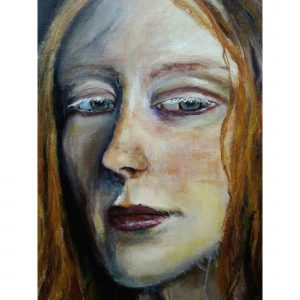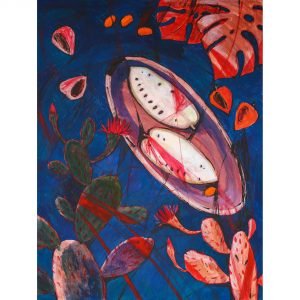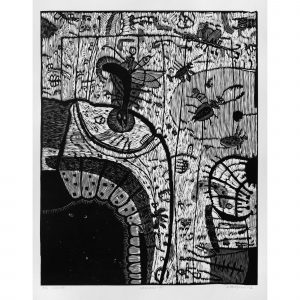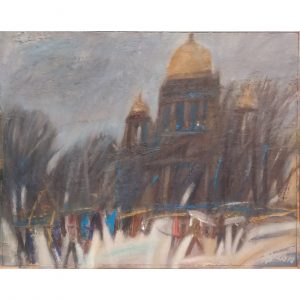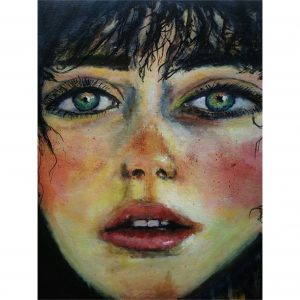Key Works in Munch’s Artistic Legacy
Munch’s art is distinguished by its emotionally charged subject matter and its innovative style, which broke away from the naturalism of his contemporaries. Among his most significant works, the following paintings stand out:

Edward Munch
«The Scream (1893)»
National Gallery in Oslo

Edward Munch
«Madonna (1894-1895)»
National Gallery in Oslo

Edward Munch
«The Dance of Life (1899-1900)»
National Gallery in Oslo
4. The Sick Child (1885-1886)
One of Munch’s early masterpieces, “The Sick Child” is a deeply personal work that reflects the artist’s memories of his sister’s death from tuberculosis. This painting, marked by a poignant atmosphere and raw brushwork, is part of the collection of the **National Gallery in Oslo**.
5. The Vampire (1893-1895)
Another significant work is “The Vampire,” a dark and evocative portrayal of a woman kissing a man’s neck, often interpreted as a commentary on love, death, and the complexities of human relationships. This piece can also be viewed at the **Munch Museum**.
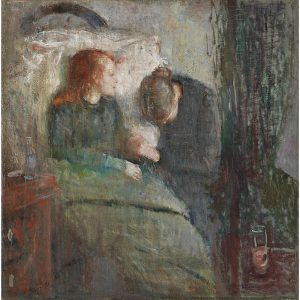
Edward Munch
«The Sick Child»
1885-1886

Edward Munch
«The Vampire (1893-1895)»
Munch Museum
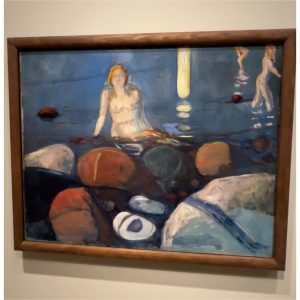
Edward Munch
«Summer night. Mermaid (1893)»
Munch Museum
The Munch Museum in Oslo: A Testament to Munch’s Genius
The Munch Museum (MUNCH) in Oslo is the most comprehensive collection of Munch’s works, dedicated to preserving and presenting his artistic legacy. The museum holds more than half of Munch’s entire artistic output, including over 1,200 paintings, 18,000 prints, and 6,000 drawings. It provides a unique opportunity to experience Munch’s evolution as an artist, from his early naturalistic works to his later, more symbolist and expressive pieces.
Located on the Oslo waterfront, the new Munch Museum, which opened in 2021, is a striking architectural landmark designed to echo Munch’s unique perspective on life and art. Visitors can explore permanent and temporary exhibitions that delve into Munch’s artistic process, thematic concerns, and influence on modern art. The museum also hosts a wide range of cultural events, making it a dynamic hub for art lovers from around the world.

Oslo, Norway
«Munch Museum»
Founded in 1963
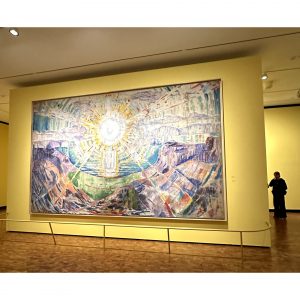
Edward Munch
«The Sun (1912-1913)»
Munch Museum
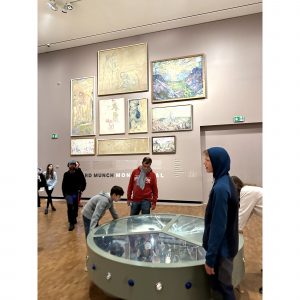
Oslo, Norway
«Munch Museum»
Founded in 1963
The National Gallery in Oslo: Home to “The Scream”
The National Gallery in Oslo is another crucial institution for understanding Munch’s art. The gallery is home to one of the most famous versions of “The Scream,” along with several other important works by Munch, such as “The Sick Child” and “The Dance of Life.” The National Gallery provides an in-depth look at Norwegian art history, with Munch’s works playing a central role in its collection.
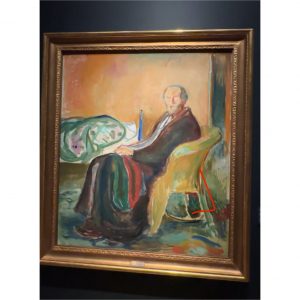
Edward Munch
«Self-portrait with the Spanish flu (1919)»
National Gallery
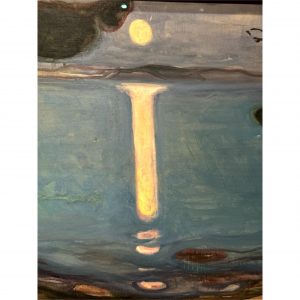
Edward Munch
«Moonlight, a fragment (1895)»
National Gallery
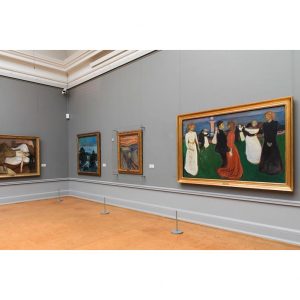
Oslo, Norway
«National Gallery»
Founded in 1842
Munch’s Global Influence
While many of Munch’s masterpieces are housed in Oslo, his influence extends far beyond Norway. His works can be found in major museums and private collections around the world, including the Museum of Modern Art (MoMA) in New York, the Tate Modern in London, and the Centre Pompidou in Paris. These institutions continue to celebrate Munch’s contributions to modern art, underscoring his status as a visionary who reshaped the boundaries of expression in painting.
Conclusion
Edward Munch remains one of the most significant figures in the history of art, known for his bold colors, innovative techniques, and emotionally charged subjects. His legacy is immortalized not only through his masterpieces but also through institutions like the Munch Museum and the National Gallery in Oslo, which offer rich experiences of his work. These museums serve as guardians of his vision, ensuring that Munch’s exploration of the human soul continues to resonate with audiences around the world.
Three paintings that resemble Munch’s works.
The similarities include emotional intensity, use of color, and an approach to depicting human emotions.
Additionally, Catherine has a wealth of experience in selecting paintings for interiors. She understands the nuances of how art can transform a space, creating harmonious and inspiring environments. Her ability to choose pieces that complement and elevate interior designs ensures that clients receive personalized and aesthetically pleasing art solutions for their homes and businesses.
CATALOGUE:
-
Sasha Brisac
Portrait of a redheaded girl
40 x 30 cm
250 € -
Jigalov Boris
Green flame
70 x 50 cm
750 € -
Agzamova Albina
Grey House
65 x 70 cm
500 € -
Hramova Tatyana
Dormitory area
30 x 40 cm
250 € -
Israfilova Vasilya
Still life with flowering cacti
80 x 60 cm
855 € -
Teregulov Ayrat
Animals-14
63 x 50 cm
900 € -
Vetrogonsky Andrey
Guests of our city
75 x 95 cm
3,400 € -
Sasha Brisac
Christine
42 x 30 cm
500 €



